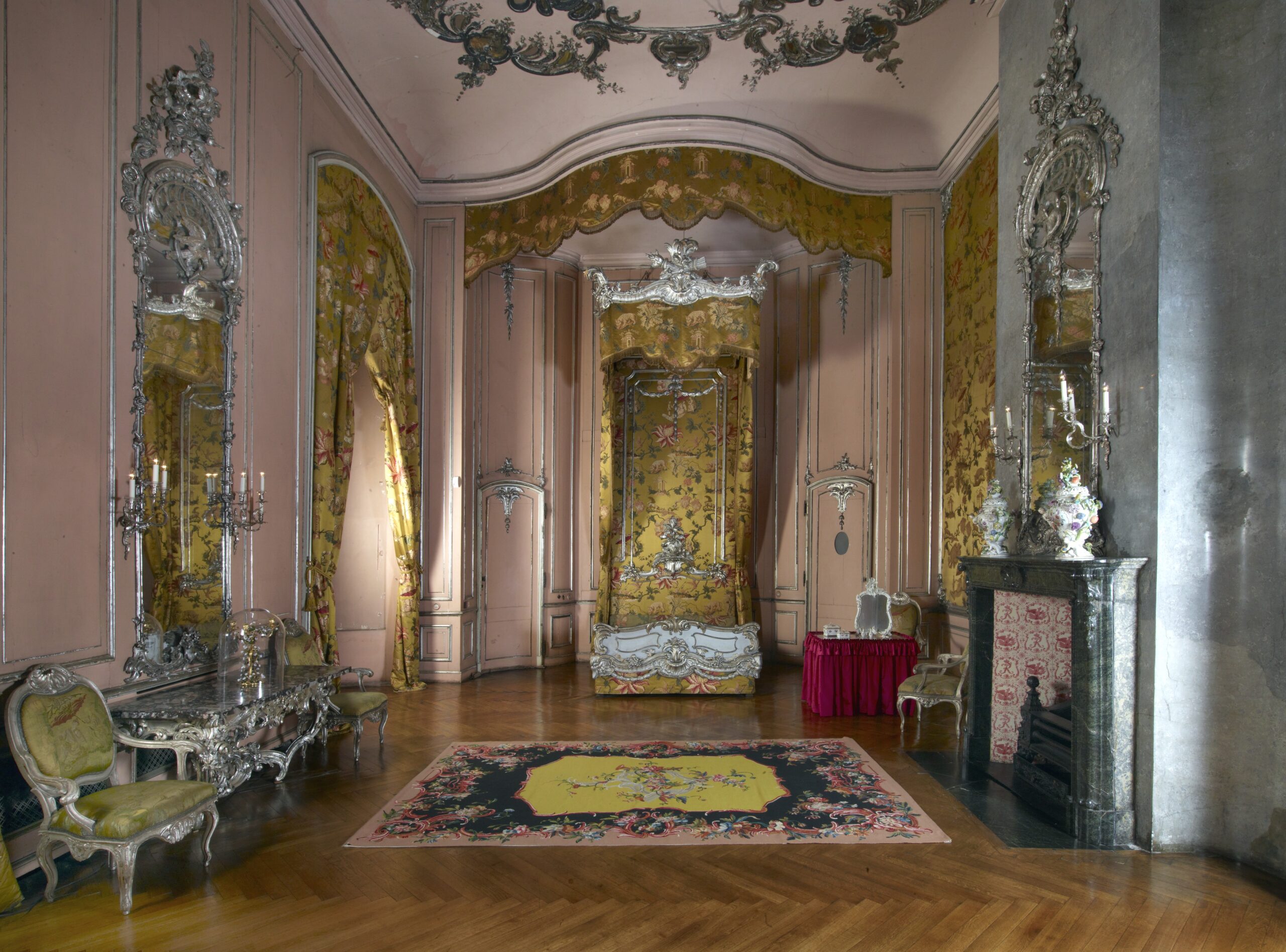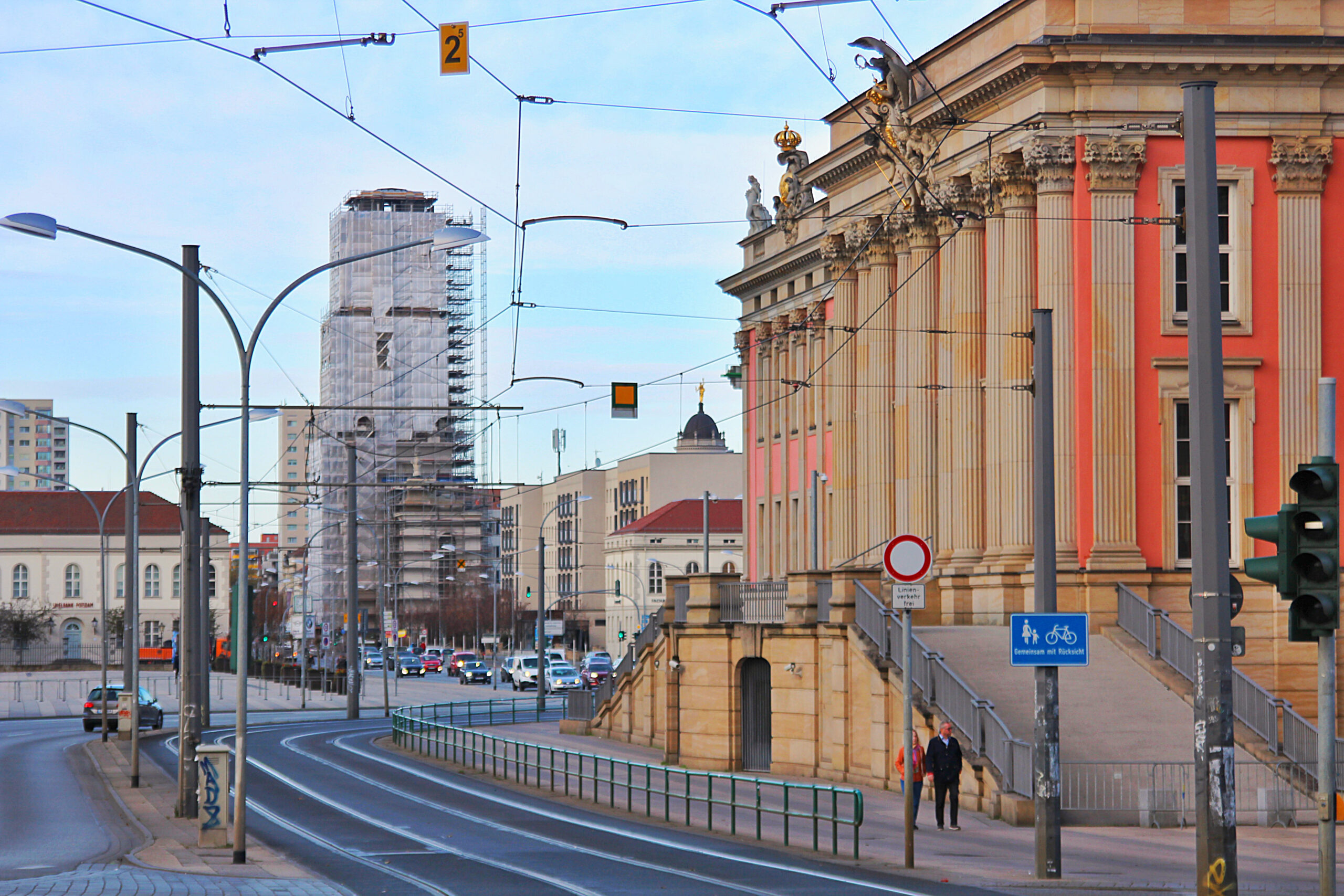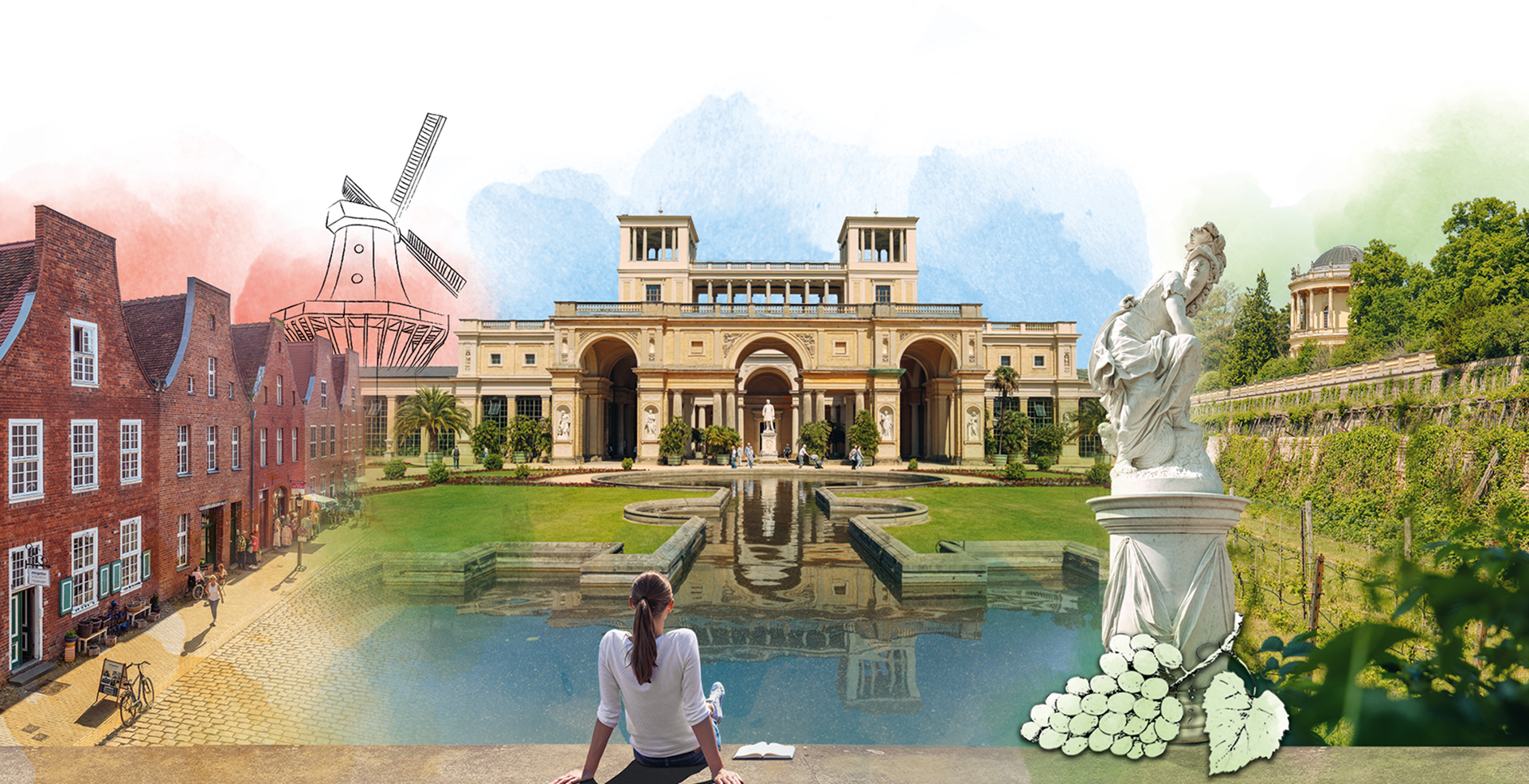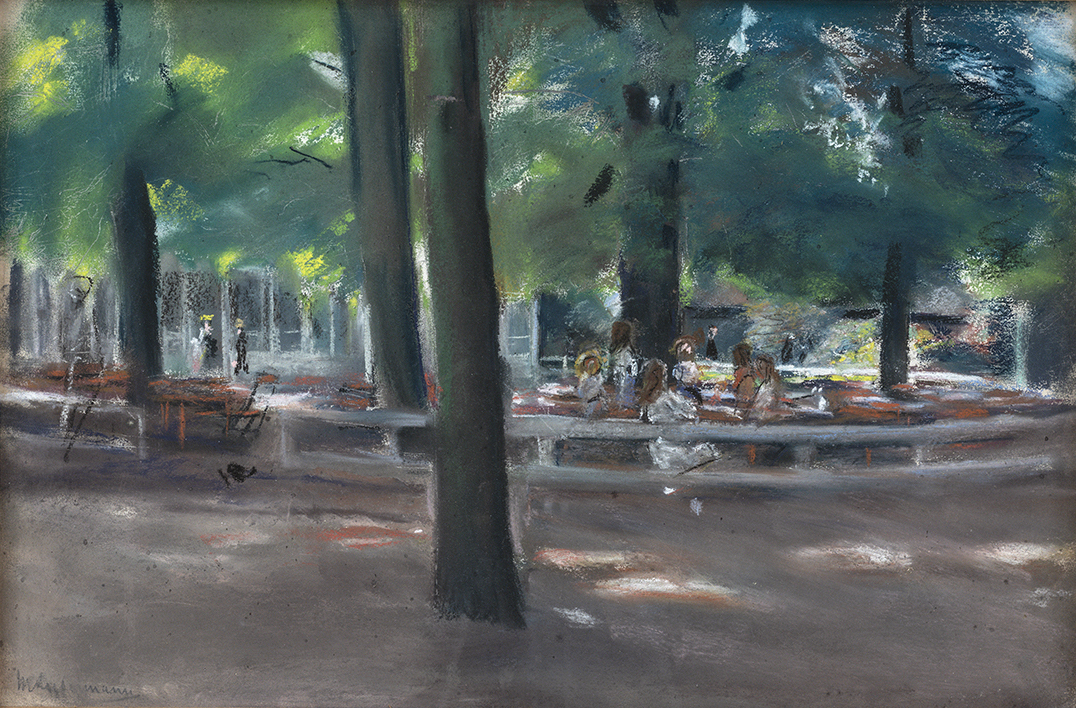
Liebermann in Holland
Max Liebermann’s oeuvre contains an extensive complex of works with Dutch motifs. For more than four decades, the Netherlands were an indispensable summer destination for the painter. He visited the neighbouring country for the first time in 1871, when he was still a student in Weimar.
“[…] I have painted too many portraits lately and must work again under God’s open sky: that is the best cure for a painter!” 1
The first years in Holland
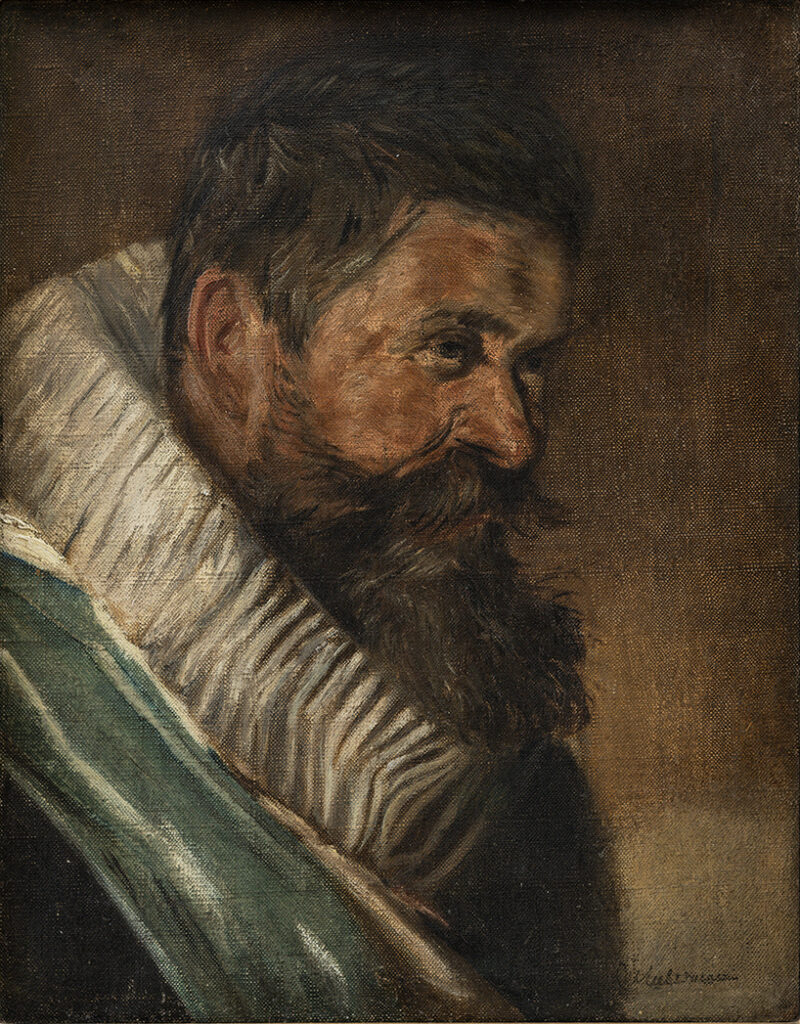
In the beginning, he was almost exclusively interested in the everyday life of the rural population. A number of his best-known early works date from this period, such as Die Konservemacherinnen, Der Weber, Die Flachsscheuer in Laren or Die Netzflickerinnen. There he painted the people at work in the fields or at home in their modest interiors. In remote areas, such as the village of Zweeloo, in the province of Drenthe, Liebermann felt as if he had been transported back to a bygone era. At the same time, he continued in the painting tradition of the Old Masters. For instance, in the summer of 1876 he copied large group paintings by Frans Hals in the Haarlem town hall.
This was followed by stays in the fishing village of Katwijk aan Zee near Leiden in 1887. From 1890 he went with his wife Martha and daughter Käthe to Zandvoort near Haarlem for a bathing cure, in order to then work alone and undisturbed. In Katwijk he produced, besides other works, studies on the motif of bathing boys and the large painting Schreitender Bauer (1894).
A new creative phase
In the mid-1890s Max Liebermann moved away from his realistic imagery and entered a new artistic phase inspired by French Impressionism. Henceforth he concentrated on the leisure pursuits of Scheveningen and Noordwijk – former fishing villages that developed into sophisticated seaside resorts. On 10 July 1897, he reported: “I work here by the sweat of my brow (in the true sense of the word). On 10 July 1897, he reported: “I work here by the sweat of my brow (in the true sense of the word). But there is only one country in the world for painting, c’est la Hollande.”3

Liebermann declared this new creative phase at the turn of the century as follows: ” As for me personally, I have entered a new […] period: in the three months I have now been in Holland, I have shed my skin again.”4 The palette brightened and scattered spots of light invigorated the brushstrokes, which had become expressive. He became increasingly interested in bourgeois leisure during these years. At the beginning of August 1900 Liebermann had taken up residence with his family at the Hôtel d’Orange in Scheveningen. During his days spent on the beach in the company of local painters such as Josef and Isaac Israëls, he produced a series of studies and paintings on the theme of horsemen by the sea. In the years that followed, Liebermann continued to work intensively on the motif of riders and grooms on the beach and also painted elegantly dressed tennis players by the sea.

Noordwijk. Place of inspiration for many years
The art dealer Paul Cassirer supposedly recommended Noordwijk to Liebermann, and so in 1905 Liebermann stayed at the health resort hotel Huis ter Duin there. In his paintings he recorded Noordwijk’s early years as a seaside resort and its further development as a tourist destination; instead of the overcrowded, fashionable Scheveningen, this coastal resort became his preferred place in Holland until 1913. In Cassirer’s house, situated in the dunes on the edge of the village, Liebermann celebrated his 60th birthday on 20 July 1907. Two days after the celebration, Cassirer wrote to the art historian Max Osborn in Berlin:
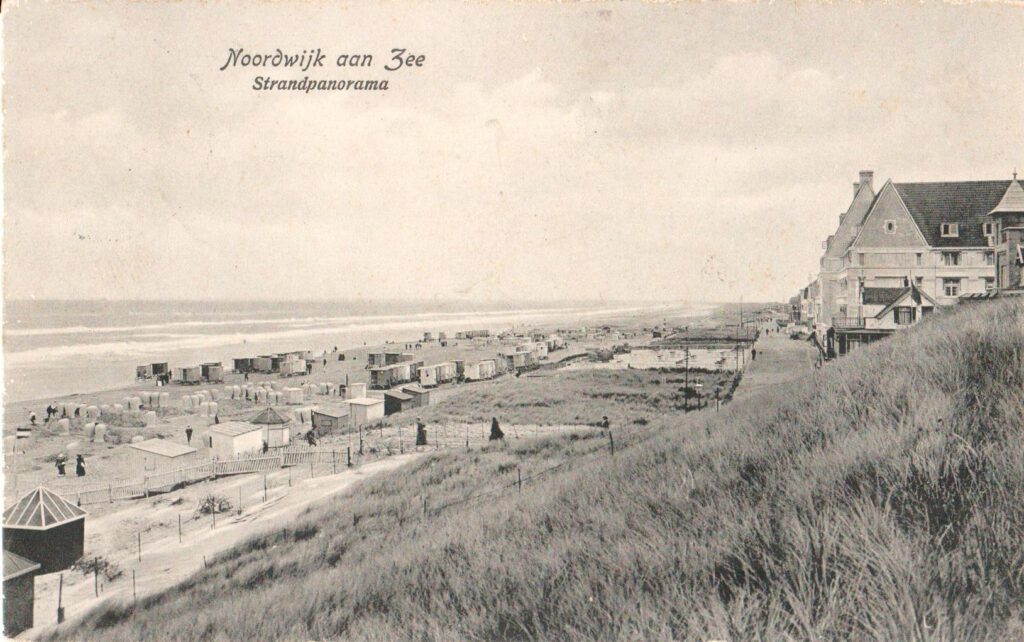
“Liebermann is staying here in my little house […] You know Noordwijk and what a quiet little nest it is […]. Well: [wir] had to get up at 6 o’clock in the morning, because the honoured master has the unpleasant habit of being an early riser. When he appeared punctually at 6:30, I congratulated him […]. Then nothing happened for a while until around 9 o’clock. From 9 o’clock in the morning until 5 o’clock in the afternoon of the 23rd, 25 telegrams came every half hour. In between also letters, mostly charged with penalty postage […]. There are also an awful lot of flowers; always the same ones, of course. Since all the bouquets were ordered from the gardener in Noordwijk. The only rays of hope were the baskets of fruit, which my cook took with satisfaction into her motherly arms.”5
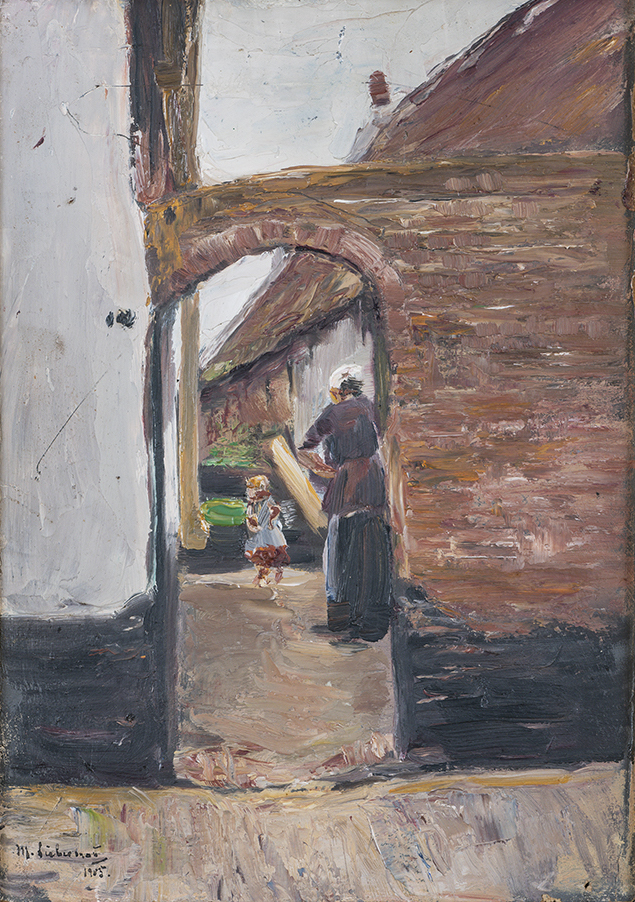
It is known from the correspondence that the collector Gustav Schiefler sent Liebermann a box of peaches to Noordwijk for his birthday. Cassirer writes further: “This joy has also turned into bitter wormwood. The peaches [sic]rotted and we have had to eat nothing but peach compotes, peach pie, peach jam and peach rice for 3 days.”6
The people of Noordwijk also congratulated the jubilarian and surprised him in the evening with the village band and the singing society. On this the art dealer writes: “When the attempt[der Kapelle] had failed for the fifth time, Liebermann asked the trusty population to drink a glass of wine. They did so and the party was over. But the oddest thing – Liebermann was moved by any attention, however naïve […] the ‘austere refined’ man was as pleased as a child.”7
An abrupt end
Thereafter, the painter never returned to his “adoptive fatherland”8. From then on, he spent the summer months with his family in his idyll on the Great Wannsee with its magnificent Reform Garden. Henceforth, he spent the summer months with his family in his idyll on the Great Wannsee with its magnificent Reform Garden. The villa served as a place of retreat and inspiration for his colourful late work.
– Alice Cazzola, Liebermann-Villa am Wannsee
(1) Max Liebermann, Letter to Alfred Lichtwark, 29.06.1908, in: Max Liebermann, Briefe, published by Ernst Braun, Vol. 4 (1907–1910), Baden-Baden 2014, p. 191.
(2) Erich Hancke: Liebermanns Kopien nach Frans Hals, in: Kunst und Künstler, Vol. 14, Issue 11, 1916, p. 525–534.
(3) Max Liebermann, Letter to Max Linde, 10.7.1897, in: Max Liebermann, Briefe, published by Ernst Braun, Vol. 2 (1896–1901), Baden-Baden 2012, p. 128–129.
(4) Max Liebermann, Letter to Franz Servaes, 14.10.1900, in: ibid., p. 366.
(5) Paul Cassirer an Max Osborn am 23. Juli 1907. Max Liebermanns 60. Geburtstag in Noordwijk, in: Max Liebermann, Briefe, hrsg. von Ernst Braun, Bd. 4 (1907–1910), Baden-Baden 2014, S. 487–488.
(6) Ibid., p. 487.
(7) Ibid., p. 487.
(8) Max Liebermann, Letter to Karl Scheffler, 16.4.1930, in: Max Liebermann, Briefe, published by Ernst Braun, Vol. 8 (1927–1935), Baden-Baden 2019, p. 318–319.

